We go directly to the source and target the symptom.
At Swingle Clinic we look at brain wave patterns (electrical signaling) associated with symptoms (e.g., insomnia, inattention, poor focus, stress, anxiety, low mood, poor motivation, memory problems, agitation, pain, cravings, confusion, perseveration, etc.) and design a road map away from them.
Extensive Clinical Research and over 25 years of in-house refining of our Clinical Data Base have shown that almost all expressed conditions (ADHD, anxiety, depression, insomnia, etc.) and their symptoms (hyperactivity / inattention, sadness / demotivation, agitation, etc.) have specific ‘signatures’ in the brain. Some are single signatures (marked by EEG readings at one location by one or two specific brainwaves) while others are associated with what Dr Mari Swingle honed as cluster signatures (marked by EEG readings at two or more locations by multiple specific brainwaves). The interplay of all of these signatures inform us on how your brain is working, … and not working so well.
States such as hyper (over) arousal (as often seen in ADHD), hypo (under) arousal (as often seen in depression), and combinations thereof (as often seen in agitated depression, fibromyalgia, or PTSD) equally have distinct EEG morphological (brainwave shape / pattern markers) in the brain.
Traits, such as aspects of personality (e.g., cognitive flexibility and drive) and / or aptitudes (artistry) and abilities (numerical processing & potential for invention / innovation) can also be ‘featured’ on the EEG.
Reading and interpreting all of these very precise EEG patterns (brainwave patterns) in real time is the specialty of the Swingle Clinic.
Setting Us Apart
Your treatment / EEG training is specific to you. We target your specific symptoms, not universal ones. We do not use non-specific programs or generalized algorithms designed for ‘conditions’.
Once we have your brainmap / assessment, we construct a personalized treatment map targeting the specific EEG / brain anomalies associated with the specific symptoms that you come to us for relief from (such as anxiety, depression, brain fog or hyperarousal). We also ‘work the positive’ promoting the EEG characteristics associated with what you want enhanced (such as focus, memory, sleep quality, and peak performance).
Training Methods
All Swingle treatments / training involve a brain-computer interface; a highly controlled feedback loop, between the brain and the technologies that permit us to influence its efficiency.
Swingle Clinic Targeted Treatment protocols, are designed to interrupt or interject new information into the computer-brain feedback loop. Individual protocols are selected to either enhance (amplify) or decrease (diminish) the absolute power or relative strength of a specific brainwave, or a specific brainwave bandwidth, to itself, or to, or with, another brainwave band. What we do (augment or decrease) in correlation (bound to or independent of other brainwaves) and the location (front, back, left, right, specific Broca’s region, specific circuitry, etc.) as well as how long, and with what intensity, is entirely dependent on your specific reported symptoms and what we read in your personalized brainmap.
That’s a mouthful! In simplified English, we use technology to permit us to read the electrical system of the brain and target the EEG (electrical) activity associated with your specific symptoms. Some symptoms are ‘caused’ by electrical (brainwave) activity that is too strong while other symptoms are ‘caused’ by (brainwave) activity that is not strong enough (what we call amplitude or ratio imbalance). Other symptoms are due to lack of electrical (brainwave) symmetry and shared rhythm, called phase and coherence issues wherein there can be either excess ‘chatter’ between parts of the brain or conversely to much ‘silence’ between regions that should be chatting.
Think of the brain as an orchestra wherein we first check the tuning (pitch and volume of individual instruments) followed by the balance within sections (the violins and the cellos), followed by across sections (the string and wind instruments) followed by total sound including rhythm, flow and under what conditions each section should (and should not) be carrying the melody. No horns please, or cymbals, and certainly not full volume when you are trying to sleep! But a precise forward moving rhythm can be good for focus.
Specific Methods
The Swingle Clinic is known for real-time Brain Driving. We invented it, refined it, and shared it! Brain Driving is the interjection of specific audio, visual, and photosonic stimuli to influence brainwave activity in a real-time brain-computer interface. Real-time interface means the stimuli is not independent of your brain activity (merely pushing no matter how your brain reacts). It is completely interdependent (changing with your brain). In sum, the stimuli is not only active, it is reactive.
Sensitivity
In difference to other methods, our protocols are also not fully computer automated. They are computer assisted. Meaning, your brain response (data) is closely monitored by a highly trained BCIA certified Neurotechnician who, in turn, is directly supervised by a Registered and Certified Clinician (Registered Psychologist or MD). Precise monitoring of specific brainwave(s), and to what extent they are responding in real time, permits subtle adjustments to enhance the power of your session.
Listening to How the Brain Responds
Data Driven: Session data is rigorously collected (by your Clinician or BCIA Certified Neurotechnician). The information / data from every session is then analysed by your Clinician to inform the following session. Data within the session also informs within session refinement to ensure your brain is training at precisely the right frequency and intensity to maximize response.
We are also explicitly attentive between sessions, performing full re-assessments approximately every 5-6 sessions looking at what brain regions (locations or circuits) are being influenced and how this in turn globally affects what the brainwave(s) and brain region(s) may govern. For example, location and bandwidth dependent, the Alpha brainwave can govern positive attention or negative brain chatter, not just ‘relaxation’ as per popular perception. Pardon the pun, but we have our eyes on all of this.

